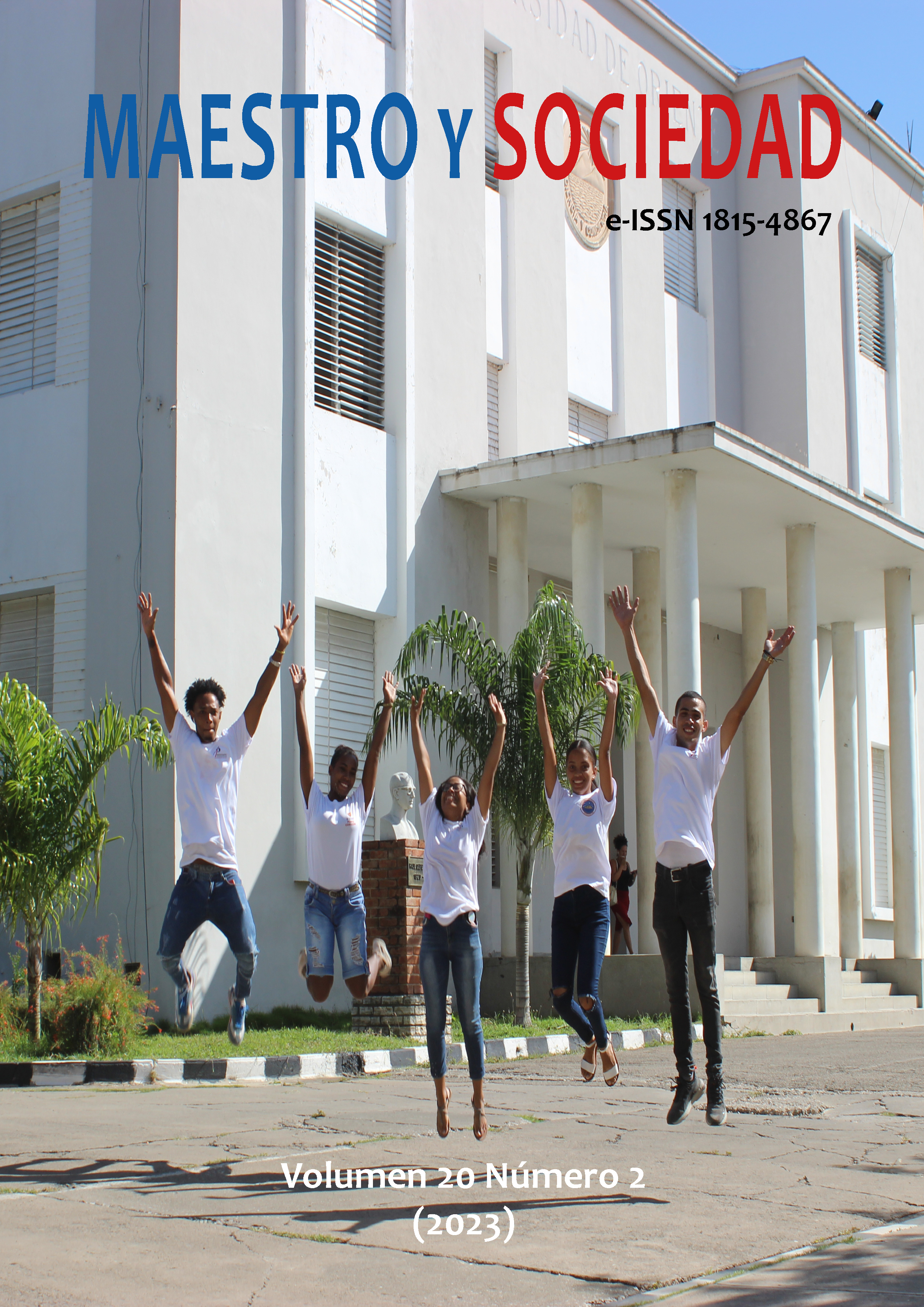Didactic orientation for the resolution of mathematical problems in students of basic higher education
Didactic orientation for the resolution of mathematical problems in students of basic higher education
Keywords:
didactic orientation, education, teaching-learningAbstract
Introduction: The main objective of this research work is to identify didactic orientations for the realization and resolution of mathematical problems regardless of the level of study of the students, a process that will be improved with the elaboration of study guides, reaching the effectiveness of the didactic orientation in The learning of mathematics. Materials and methods: With the application of educational methods and techniques to broaden the knowledge and participation of students. Results: This study is aligned to the discipline of didactics as a tool or resource that supports the methodology in the teaching-learning processes of the subject of mathematics that improves the development of abilities and skills to solve numerical problems with techniques and formulas in simple ways and achieve knowledge of the exact sciences. Discussion: The didactic orientation is part of the actions that ensure the formative influence. Conclusions: It is important and necessary to contribute to the resolution of mathematical problems that students handle in the numerical subject that is developed in the teaching-learning process in the classroom settings of the Puerto Quito educational unit.
References
Aravena, M. y Caamaño, E. (2007). Modelización matemática con estudiantes de secundaria de la comuna de Talca. Estudios Pedagógicos, XXXIII(2), 7-25.
Beyer, W. (2000). La resolución de problemas en la Primera Etapa de la Educación Básica y su implementación en el aula. Enseñanza de la Matemática, 9(1), 22-30.
Carrasco Aristi, C., &Teccsi Baez, M. (2017). La actividad lúdica en el aprendizaje de las matemáticas en los estudiantes del V ciclo de la Institución Educativa 2074 “Virgen Peregrina del Rosario” del distrito de San Martín de 33 Porres-2015. [Tesis de Magister. Universidad César Vallejo].
Cisneros Garbey, S. (2015). Esbozo de una orientación didáctica universitaria de perspectiva comunicativo accional. Universidad de Oriente.
Díaz, M. y Poblete, A. (2001). Contextualizando tipos de problemas matemáticos en el aula. Revista de didáctica de las matemáticas, (45), 33-42.
Faubell Zapata, V. (1991). Las órdenes y congregaciones religiosas y la educación en la España contemporánea. En: Prellezo, J. (coord.), L'IMPEGNO DELL'EDUCARE (pp. 113-134). L.A.S
Guerra, V. y Arends, P. de (2008). Medición de la Imagen Institucional de un Postgrado Universitario. Ingeniería industrial, actualidad y nuevas tendencias, 1(1), 10-20.
Gutiérrez, H. (2005). Calidad Total y Productividad. McGraw-Hill.
Mineduc. (2019). Organización Curricular Matemáticas. https://www.curriculumnacional.cl/portal/Educacion-General/Matematica/20852:Organizacion-CurricularMatematicas
OECD. (2014). Skills for Life: Student Performance in Problem Solving. OECD. http://www.oecd.org/pisa/keyfindings/pisa-2012-results.htm
Vega Méndez, C. (1992). La Enseñanza de la Matemática en la Escuela Básica a través de la Resolución de Problemas. Enseñanza de la Matemática, 3(1), 15-21.
Downloads
Published
How to Cite
Issue
Section
License
Copyright (c) 2023 Michael Vera Mendoza, Badie Anneriz Cerezo Segovia

This work is licensed under a Creative Commons Attribution-NonCommercial-NoDerivatives 4.0 International License.
This journal provides immediate open access to its content, based on the principle that offering the public free access to research helps a greater global exchange of knowledge. Each author is responsible for the content of each of their articles.



























 Universidad de Oriente
Universidad de Oriente 